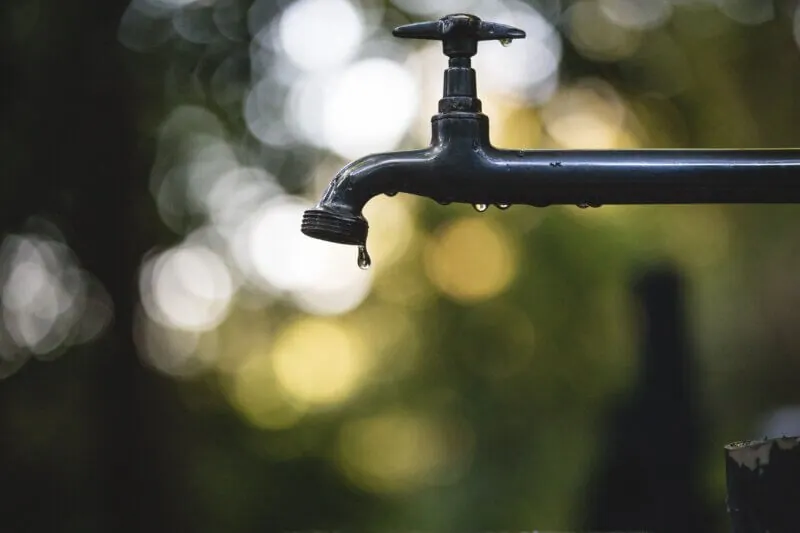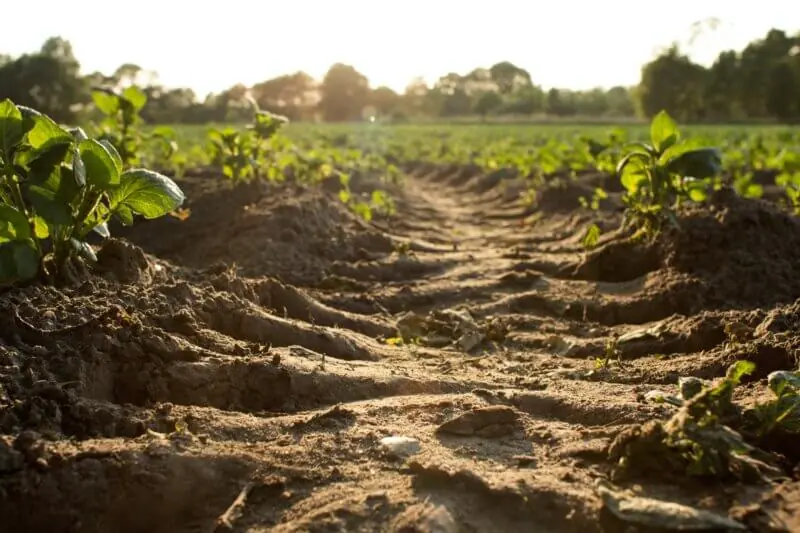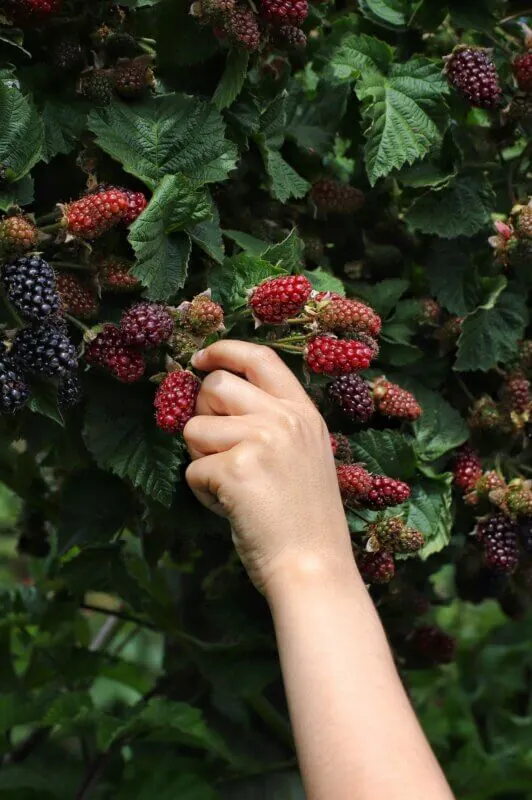New Product Launch: ClimateLens Monitor Yield Outlook - see regional and location-specific yields on key commodity crops, updated weekly. Learn More
Himanshu Gupta • June 22nd, 2023.
In 2022, Europe experienced a once-in-500-years drought. Unfortunately, 2023 is looking just as dry.
A grim reflection of climate change is materializing. The once submerged 11th Century Church of Sant Roma de Sau in Catalonia stands several meters above water. French cities put a halt on new housing projects due to water scarcity. Spain, a bastion of crops that depend on rainfall – like cereals, grapes, and almonds – finds itself wrestling with the potential of a parched year ahead.
In the face of these drastic changes, like dry river beds and residents relying on shipped-in water, businesses are compelled to adapt and evolve. Organizations that are successfully navigating these rough climate-change-induced waters provide valuable insight to businesses across the world.
By learning from European organizations that are adapting to climate change, businesses in sectors like agriculture can enhance their resilience and gain a competitive advantage.
There are three types of droughts: meteorological, hydrological, and agricultural. Meteorological droughts indicate a lack of rainfall. Hydrological droughts indicate a lack of water in traditional storage reservoirs, like lakes, rivers, and aquifers. An agricultural drought is a lack of water in the soil. Europe is navigating all three drought types after multiple years of little rain and extreme temperatures.
Groundwater levels across Europe have been low since 2018. Today, over 45% of the continent is experiencing a drought warning or a drought alert. (A drought warning signifies an area is experiencing soil moisture deficit. A drought alert means a lack of rainfall and low moisture levels are causing vegetation stress.)
Some experts suggest that to remediate the drought conditions in Europe, we’d need almost 10 precipitation-heavy years.
Climate change makes droughts longer, more intense, and more frequent. Plus, water consumption, water mismanagement, and precipitation all impact drought conditions. How Europe navigates these first two practices will play a large role in its resilience. To save livelihoods and entire industries, Europe can’t afford to mismanage the water they have left.
Global warming can make a bad drought even worse in three ways:
Warmer temperatures stimulate early vegetation growth. Trees and shrubs burrow deeper underground to find the water they need to survive. This water is often used by cities and farming professionals during extreme drought conditions. Yet, there’s less groundwater to go around for plants and people due to evaporation and extra use.
Plus, milder winters give fungus and disease more time to attack crops. Without grazing fields, livestock farmers struggle to feed their cattle. Due to a lack of flowers, many honey farmers have had three consecutive years without a harvest in Europe.
Extreme droughts threaten lives, biodiversity, and industries. Agriculture takes the biggest hit. Then food manufacturing, tourism, and travel services feel a ripple effect. Anything moved by waterway transportation can suffer. Last year, Norway and Spain had to close hydroelectric plants due to a lack of rain.
To better manage their water this year, countries like Spain have reduced agricultural water use by 40%. Growers are now tasked with reducing water consumption while maintaining healthy returns on investment and crop yields.

High-tech irrigation systems limit water loss by watering only when and where it’s necessary. As the Po River reaches historic lows, Italian farmers are investing in precision irrigation to make the water they have left last longer before the hotter months arrive.
Precision irrigation can increase water savings by up to 70% in several ways. Mobile applications help farmers make adjustments to water applications with real time data. Some of that data includes monitoring sap in trunks, recording the water percentages in leaves, and utilizing flying and underground drip irrigators.
Making these decisions to invest in pricey but more efficient irrigation tech like this requires an understanding of long-term regional climate and water impacts. Farmers and agribusinesses need to know exactly what risks the land they grow on is facing to justify these investments.
It’s estimated that Europe loses one-quarter of its drinking water from their pipes. Some countries, like England, are trying to stop the leaks. The British are investing 10 billion pounds to fix sewage and water leaks. There are also proposed regulations requiring tank installations to catch reusable greywater in all new housing developments.
Businesses can’t ignore their leaky pipes. They have to look for tangible steps to fix the big problems over time, but as fast as possible. In every business, there are likely things that feel like “eating a whale.” Yet continuous bites could make a significant difference over time.

Given the difficulties to generate yields, Europe currently can’t afford to be picky when it comes to its produce. Grocery chains like Lidl and Waitrose have started selling “stunted” produce to make up for shortages. Some of the produce includes apples, carrots, potatoes, onions, pears, peppers, brussels sprouts, and strawberries.
This is a win/win/win scenario. Grocery stores are able to continue to support British farmers by selling their “wonky” produce. It also keeps costs lower for customers and decreases food waste. The grocery chains have started including misshapen fruits and vegetables in their smoothies and ready-to-make meals for those who think the weird-looking produce is unpalatable.
Climate forecasting is essential for all industries to make informed decisions for the future. When it comes to agriculture, drought-tolerant seeds and crops go hand in hand with forecasting.
Advanta is Australia’s leading seed provider but also operates in Romania and Ukraine. They create seed technology that fights climate change through sustainable action while enhancing nutrition and livelihoods of farmers.
Advanta invested in AI seasonal forecasting to give them an edge over competitors. Some of the ways they’ve used it include:
Syngenta – an agriculture company helping to improve food security – has also been investing in drought-tolerant varieties to improve yields while reducing water dependency.
Thirty percent of the earth’s soil is degraded. This means it’s difficult to impossible to grow crops in; it’s susceptible to wind and water erosion; it’s unable to filter and hold water; and it’s not sequestering carbon.
Organizations like Corbion, based in the Netherlands, are implementing sustainable agriculture practices to protect healthy soil, and nurture degraded soil.
By implementing no-till practices and cover crops, they’re able to improve soil structure. Healthy soil has a porous texture that reduces erosion and improves water infiltration and retention.
Companies can turn to emerging agri-tech, such as sensors that measure soil moisture and monitor soil pH, to make key in-season management decisions to avoid overwatering and overusing fertilizers.

Agri-finance provides the funding for businesses to transition to sustainable practices, invest in innovative technologies, and ensure their resilience amidst environmental challenges. Green loans and bonds allow businesses to invest in climate-friendly technology, like a new water-wise drip irrigation system, or planting a new drought-tolerant crop variety.
If you decide to pivot your entire model to focus on regenerative farming, impact investing can support your organization. Impact investing is venture funding with explicit social and environmental goals. Backing sustainable businesses is good for the planet, and reduces the financial risk associated with climate change.
Yet, investing in new systems can’t happen without risk. Agri-professionals should also consider index-based insurance which provides financial safety nets for farmers, protecting them from climate-induced losses. Businesses with index-based insurance can adopt sustainable, and potentially riskier, farming practices.
Investors who want to work with businesses that are going to be around for the next five, ten, or fifty years, need to know what the organization’s plan is to adapt to climate change. Agri-businesses cannot continue to operate and produce the yields they did ten or fifteen years ago without a plan for global warming.
By working with sustainable, adaptable, and forward-thinking organizations, investors can make the most of their return on investment. Farmers that are able to prove that their practices are sustainable can unlock new funding opportunities.
Driscolls grows high-quality strawberries, blueberries, raspberries, and blackberries around the world. They plan to be known for their berries for many years to come, so they’ve made sustainability a key business strategy.
When it comes to water conservation, Driscolls uses advanced technology, like precision irrigation methods and soil moisture level monitors. This provides AI-driven analytics to help them make the most of each bush on their farm.

Given the unique climates required to grow berries, Driscolls knows water management isn’t the only solution to all their problems. They’re diversifying their sourcing areas by measuring when the areas they’re in now will no longer have a viable climate. They’re also determining what areas may be suitable for their produce in the future, based on expected climate changes.
To ensure they maintain a reliable yield of high-quality products, they’re also cultivating berries for conditions and climates seven to eight years down the road.
“Business as usual” is no longer an option. The EU and UK lose around 9 billion euros a year to drought. If Europe has taught us anything, it’s that until we can better manage our emissions, climate change can impact entire industries and continents.
Businesses that want a leg up (on other businesses, and the weather) should consider creating a drought-risk map across their entire operations, from seeds to shipping. Include historical data that could be helpful in your future decision-making.
Then, make a plan to increase your drought resilience, soil management, and regenerative agriculture practices. Today, business success requires adapting to, and working with, climate change.
There’s room for all to better manage our resources – especially water.
Struggling to create a climate-resilience plan? Do you need data to make informed decisions? We can help!